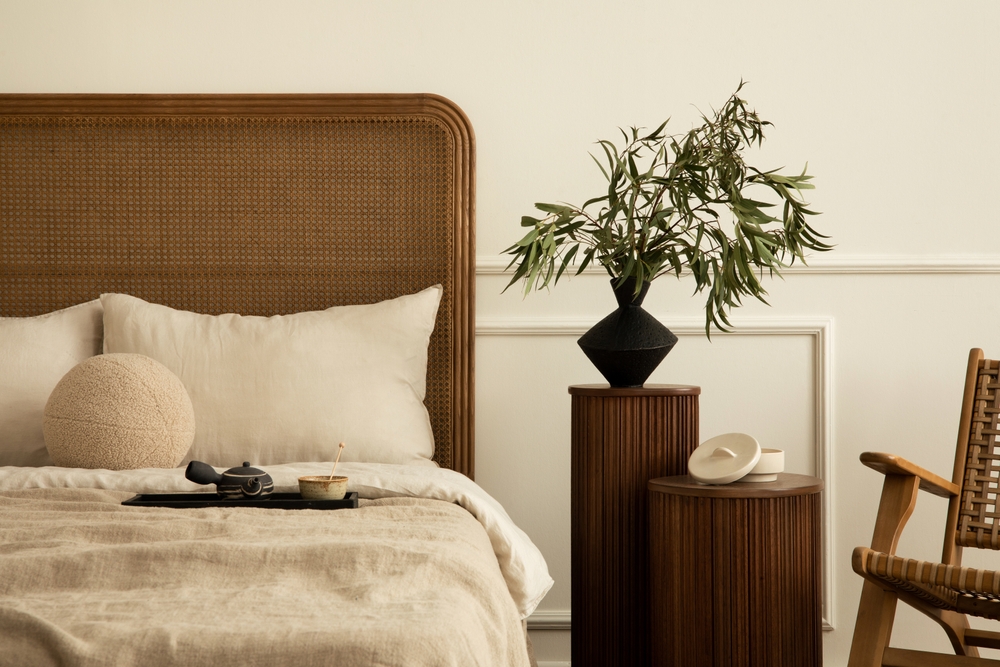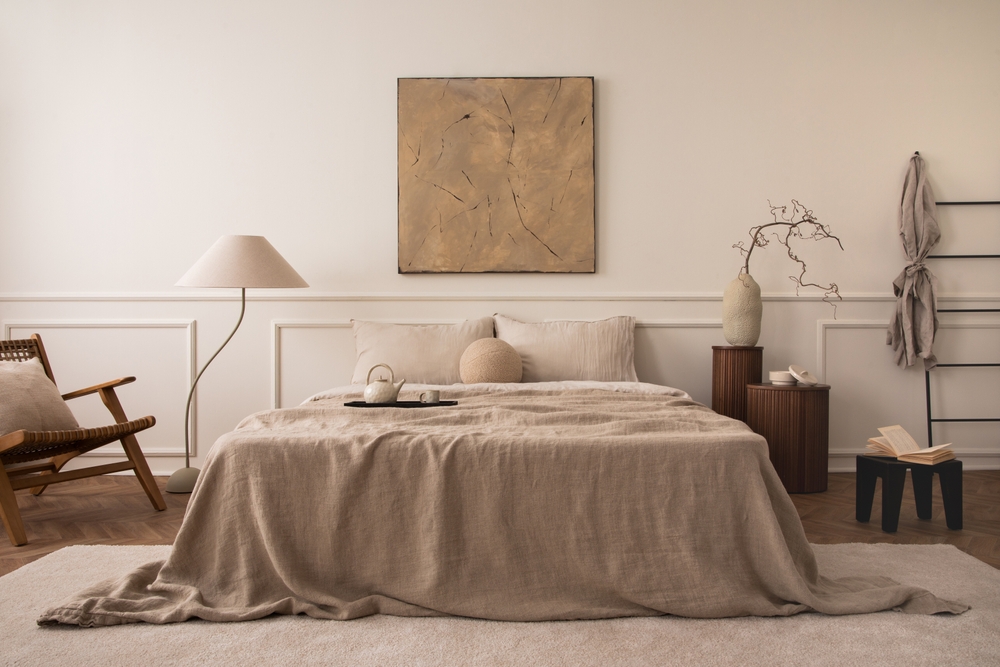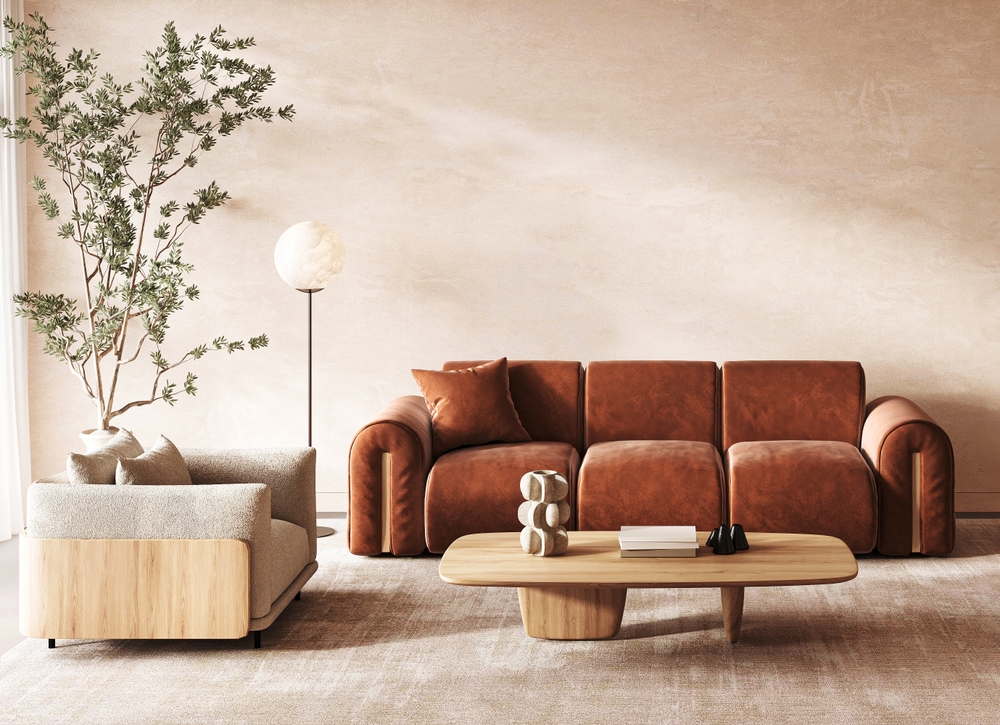Table of Contents
In this article, we’ll dive into what makes Japandi style so special – its origins, defining characteristics, and how it can fit into various design styles. We’ll explore the essential elements, from textures to color palettes, and offer tips on how to bring Japandi into your own home. Whether you’re a minimalist at heart or simply looking for a more peaceful space, Japandi has something to inspire you.
What is Japandi Style?
Japandi style is a blend of Japanese minimalism and Scandinavian functionality. It combines the warm, cozy simplicity of Scandinavian decor with the elegant, Zen-inspired minimalism of Japanese interiors. Japandi design aims to create a harmonious and calming atmosphere in your space.
In a Japandi style home, every element serves a purpose. Expect clean lines, muted color palettes, and natural materials like wood, bamboo, and linen. The focus stays on functionality and serenity, so you won’t find clutter or unnecessary decor here. Instead, Japandi design celebrates thoughtful, intentional spaces that promote balance and wellbeing.
Defining characteristics of Japandi style include natural light and open layouts. Pairing light wood tones with soft, earthy hues enhances a calm feeling. You’ll also notice an appreciation for craftsmanship, with handmade ceramics, low-profile furniture, and textured rugs adding depth and personality to the space.
Whether you’re revamping your home or designing a new one, the Japandi design style invites you to create a peaceful retreat. Embrace this aesthetic and enjoy a space that feels as functional as it is tranquil.
History & Origin of Japandi Style
The fusion of Japanese and Scandinavian design principles emerged as a natural extension of the shared values between these two aesthetics. Both traditions prioritize simplicity, functionality, and a deep respect for natural elements.
The roots of Japanese design go back centuries to “wabi-sabi,” a philosophy that values imperfection and transience. You can see this influence in the clean lines, muted tones, and handcrafted details that define Japandi interiors.
Meanwhile, Scandinavian design gained global recognition in the mid-20th century, particularly during the 1950s, with the rise of modernist designers like Alvar Aalto and Arne Jacobsen. Their work emphasized minimalism, functionality, and cozy living. Together, these key components align seamlessly with Japanese aesthetics.
Japandi design began gaining popularity in the early 2010s as global design trends shifted toward sustainable and intentional living. This style resonated with people looking to blend traditional craftsmanship with modern simplicity.
Today, Japandi reflects a cultural exchange that bridges continents while staying true to its origins. Whether you’re drawn to its Japanese roots or Scandinavian influences, embracing Japandi style means bringing a timeless, balanced approach to design into your home.

How to Get the Japandi Look
Japandi style is all about simplicity, natural materials, and intentional decor that fosters balance and calming feelings. It is an inspirational design approach that helps you create a home that’s both beautiful and practical. From choosing the right textures and colors to pairing with other design styles, discover how easy it is to bring Japandi elegance into your space.
Essential Design Elements
Japandi design style focuses on creating a serene and purposeful space that feels connected to nature. Its beauty lies in simplicity and function, making it perfect for sustainable home designs. Here are some key features to include in your Japandi-inspired home:
- Natural light: Maximize sunlight by using sheer curtains or keeping windows bare to create an open and airy feel.
- Natural materials: Incorporate wood, bamboo, stone, and linen for a warm, organic touch.
- Intentional and functional decor: Choose decor that serves a purpose, like minimalist storage solutions or handcrafted pottery.
- Low-profile furniture: Incorporate furniture with clean lines and a low profile, emphasizing balance and simplicity.
- Clutter-free spaces: Keep surfaces clear and focus on quality over quantity to enhance the peaceful vibe.
- Indoor-outdoor connection: Bring the outdoors in with houseplants or views of natural landscapes to foster harmony with nature.
Colors
Japandi style interiors use a calming, neutral, and earthy color palette to create balance and harmony. The goal is to reflect nature while maintaining a clean, minimalist aesthetic. Here are some typical colors to incorporate into your Japandi style home:
- Soft neutrals: Shades like beige, cream, and ivory form the foundation of Japandi interiors.
- Earthy browns: Warm wood tones and rich browns add depth and natural warmth.
- Muted grays: Subtle gray tones bring sophistication and balance to the palette.
- Dusky greens: Incorporate olive or sage green to connect your space with nature.
- Charcoal and black accents: Use these sparingly to add contrast and definition.
- Pastel touches: Light blush or pale blue can provide a soft, understated pop of color.
Textures
Textures play an essential role in Japandi design, adding depth and warmth to its minimalist aesthetic. Mixing natural and soft materials creates a balanced, inviting atmosphere. Here are some important textures to incorporate into your Japandi home:
- Smooth woods: Light or medium-toned wood surfaces for furniture and flooring bring an organic, polished feel.
- Woven fibers: Rattan, bamboo, and wicker add a touch of natural charm and visual interest.
- Linen and cotton: Soft, breathable fabrics for curtains, throws, or cushions enhance comfort without overwhelming the design.
- Ceramics and stone: Handcrafted pottery, vases, and stone accents add tactile variety and an artisanal touch.
- Cozy knits: Subtle knitted or woven textiles, like rugs or blankets, add warmth and texture.
- Matte finishes: Matte or lightly textured surfaces on walls or furniture keep the look understated and cohesive.
Complementary Design Concepts
Japandi’s versatile and minimalist aesthetic makes it easy to blend with other design styles. Whether you prefer the sleek lines of modern decor or the cozy warmth of Scandinavian design, Japandi can complement and enhance your space. Here’s how it works with popular styles:
- Scandi: Japandi shares roots with Scandinavian design, so combining the two is seamless. Add hygge-inspired touches like soft throws and candles for a cozier vibe.
- Mid-century modern: Pair Japandi’s natural materials with mid-century furniture’s clean lines and bold shapes to create a retro-modern balance.
- Industrial: Soften industrial elements like exposed brick and metal with Japandi’s warm woods and neutral tones for a chic, grounded look.
- Bohemian: Incorporate Japandi’s simplicity with boho textures like macram – and layered rugs for an eclectic, curated feel.

Wrapping Up: Japandi Style
Create spaces that are serene, intentional, and rooted in nature by combining Japanese minimalism and Scandinavian functionality. Japandi style encourages you to create a calm and organized environment, free from clutter, where every piece has a purpose.
SHAWOOD embodies these same principles, offering a community designed for modern living. SHAWOOD homes reflect the best of Japandi style with a focus on comfortable design and functional spaces. Each detail, whether it’s the smart use of natural light or durable materials, reflects the same intentionality at the heart of Japandi design. With SHAWOOD, you can enjoy the peaceful balance of Japandi-inspired design while living in a community that values sustainability and well-being.
Frequently Asked Questions

What are the rules for Japandi design?
There aren’t strict rules for Japandi design, but there are guiding principles to help you create a space that embodies its essence.
Japandi focuses on balance, simplicity, and functionality while connecting with nature. Start by decluttering. Japandi spaces avoid excess, so choose only what’s essential and meaningful. Every item should serve a purpose. Whether it’s furniture or decor, prioritize functionality and craftsmanship. Finally, embrace intentionality.
Japandi design is about creating a home that feels serene, so let your choices reflect thoughtfulness and care. These concepts ensure your Japandi-inspired space feels as balanced as it is beautiful.

Is Japandi design still in style?
Absolutely! Japandi design remains a favorite because it goes beyond trends. Its emphasis on simplicity, functionality, and natural materials gives it timeless appeal. Unlike flashier styles that come and go, Japandi aligns with a growing focus on sustainable living and mindful consumption.
But ultimately, design is personal. If Japandi resonates with your taste and lifestyle, it will never feel outdated. Whether you love its minimalist approach or appreciate its harmony with nature, Japandi can help you create a home that feels fresh, calming, and uniquely yours. Trends may change, but the principles behind Japandi make it a lasting choice for intentional living.

What is the difference between Scandi and Japandi?
Scandi design, rooted in Scandinavian traditions, emphasizes coziness and comfort, often referred to as hygge.It incorporates lighter woods, soft textures, and warm, inviting tones to create spaces that feel snug and welcoming.
On the other hand, Japandi blends Scandinavian simplicity with Japanese minimalism. It takes a more intentional and balanced approach, focusing on clean lines, earthy materials, and the concept of wabi-sabi. Japandi spaces often feel more grounded and zen-like, with a sharper emphasis on functionality and harmony with nature. If you love the warmth of Scandi but crave the serenity of Japanese design, Japandi offers a thoughtful blend of the two worlds.





